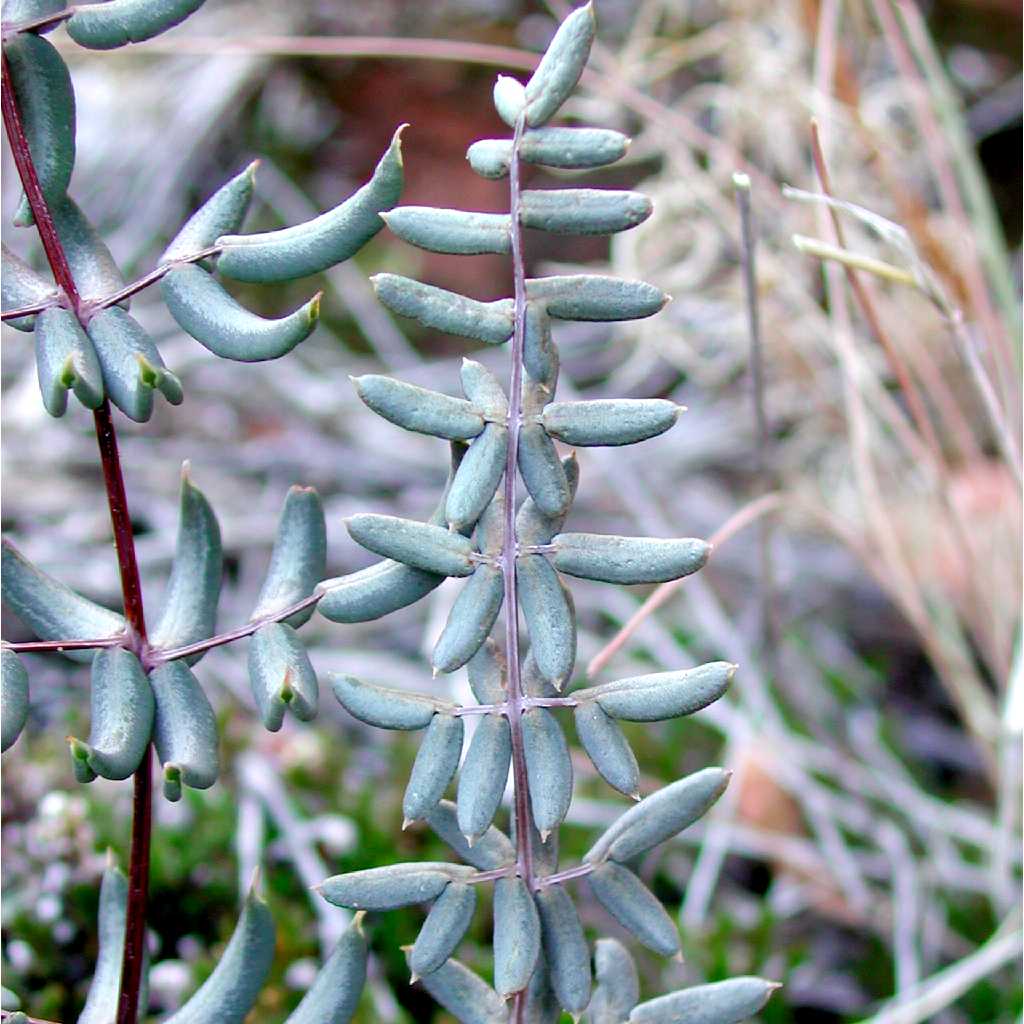Wright'S Cliffbrake
(Pellaea wrightiana)

Description
Stems compact, ascending, stout, 5--10 mm diam.; scales bicolored, linear-subulate, 0.1--0.3 mm wide, centers black, thick, margins brown, thin, erose-dentate. Leaves monomorphic, clustered on stem, 6--40 cm; croziers sparsely villous. Petiole dark brown, lustrous, flattened or slightly grooved adaxially, without prominent articulation lines. Blade linear-oblong, 2-pinnate proximally, 1.5--5 cm wide; rachis brown throughout, straight, shallowly grooved adaxially, usually glabrous. Pinnae perpendicular to rachis or slightly ascending, not decurrent on rachis, usually with 3--9 ultimate segments; costae straight, 2--20 mm, usually shorter than ultimate segments. Ultimate segments narrowly oblong, 5--20 mm, leathery, glabrous; margins recurved on fertile segments, usually covering less than 1/2 abaxial surface, borders whitish, crenulate; apex mucronate. Veins of ultimate segments obscure. Sporangia long-stalked, containing 64 spores, intermixed with sparse farina-producing glands. 2 n = 116.Sporulating summer--fall. Cliffs and rocky slopes, on a variety of acidic to mildly basic substrates; 300--2900 m; Ariz., Colo., N.Mex., N.C., Okla., Tex., Utah; n Mexico.W. H. Wagner Jr. (1965) suggested that Pellaea wrightiana was a fertile allotetraploid hybrid between P . truncata (as P . longimucronata ) and P . ternifolia . This hypothesis has been confirmed by isozyme analyses (M. D. Windham 1988). Pellaea wrightiana is therefore treated as a distinct species rather than a variety of P . ternifolia . This tetraploid species hybridizes with P . truncata and P . ternifolia subsp. arizonica to produce sterile triploids and tetraploids with intermediate morphology and malformed spores. Pellaea wrightiana has also hybridized with P . atropurpurea to form a rare apogamous pentaploid known only from western Oklahoma.
Taxonomic tree:







